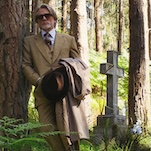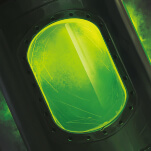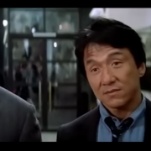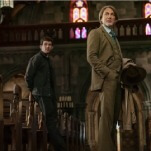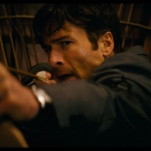Death In Venice

Michelangelo Antonioni's 1966 film Blow-Up sparked debate outside urban arthouses and in mainstream-media opinion pages throughout the late '60s, sharply dividing those who thought the movie was the height of cinematic art and those who considered it a load of pretentious crap. These days, the existential mystery at the center of Blow-Up's plot isn't as captivating as the film's atmosphere. Arrogant young fashion photographer David Hemmings rollicks through "Swinging London," passing face-painted hippie jesters and emaciated models wearing two-tone op-art miniskirts and pouty expressions. Like Alice's Restaurant a few years later, Antonioni's sour inside perspective on hipster culture cultivates a mood of sophisticated exhaustion even as it exploits the scene's wildness. Hemmings bullies women and plays games only he understands, and when he thinks he may have inadvertently captured a murder on film, he finds the evidence receding from him the closer he looks. The question of what Hemmings sees and what it means matters less than it once did, except maybe to ponderous undergrads and Blow-Up DVD commentator Peter Brunette, who gets hung up on specific camera angles as proof of the director "foregrounding his presence." Blow-Up defies analysis by design, given that it's about an artist who makes messes and cleans them up only in part, leaving behind the splatter that interests him. Antonioni follows a similar methodology, making strict interpretations of Blow-Up pretty pointless, and certainly less enjoyable than soaking up the mod decadence and ennui. Luchino Visconti's 1971 adaptation of Thomas Mann's Death In Venice comes from a slightly older Italian director, and features a much older British artist as its central character, but its drama is comparable, and it's similarly peppered with long silences. Dirk Bogarde plays a sickly composer and theoretician vacationing in Venice and reflecting on his failures, most of which stem from his inability to handle strong emotions. Visconti's movie has a novelistic quality—it's peppered with minor incidents and characters, including an unscrupulous gondolier, a misplaced trunk, a ghoulish busker, and a hideous makeover. Visconti makes the story cinematic by drawing out the interstitial scenes and offering up slow cross-room pans, during which Bogarde apparently has internal monologues that are left to the audience's imagination. Visconti does hint at what Bogarde is contemplating, namely whether art is created through effort, or whether it merely exists, like nature. The debate is illustrated through Bogarde's fascination with an effeminate teenage boy, who may remind the musician of his dead son, or may just represent the forbidden homosexual love that he's long craved. The opening shot of Death In Venice, an extremely gradual fade-in to an ocean liner, establishes the film's deliberate style, which encourages the audience to sit quietly and stare. And there's a lot to stare at in Visconti's re-creation of turn-of-the-century Venice. Like Blow-Up, Death In Venice conveys the romance of a troubled aesthete, wandering alone in a city of wonders.

